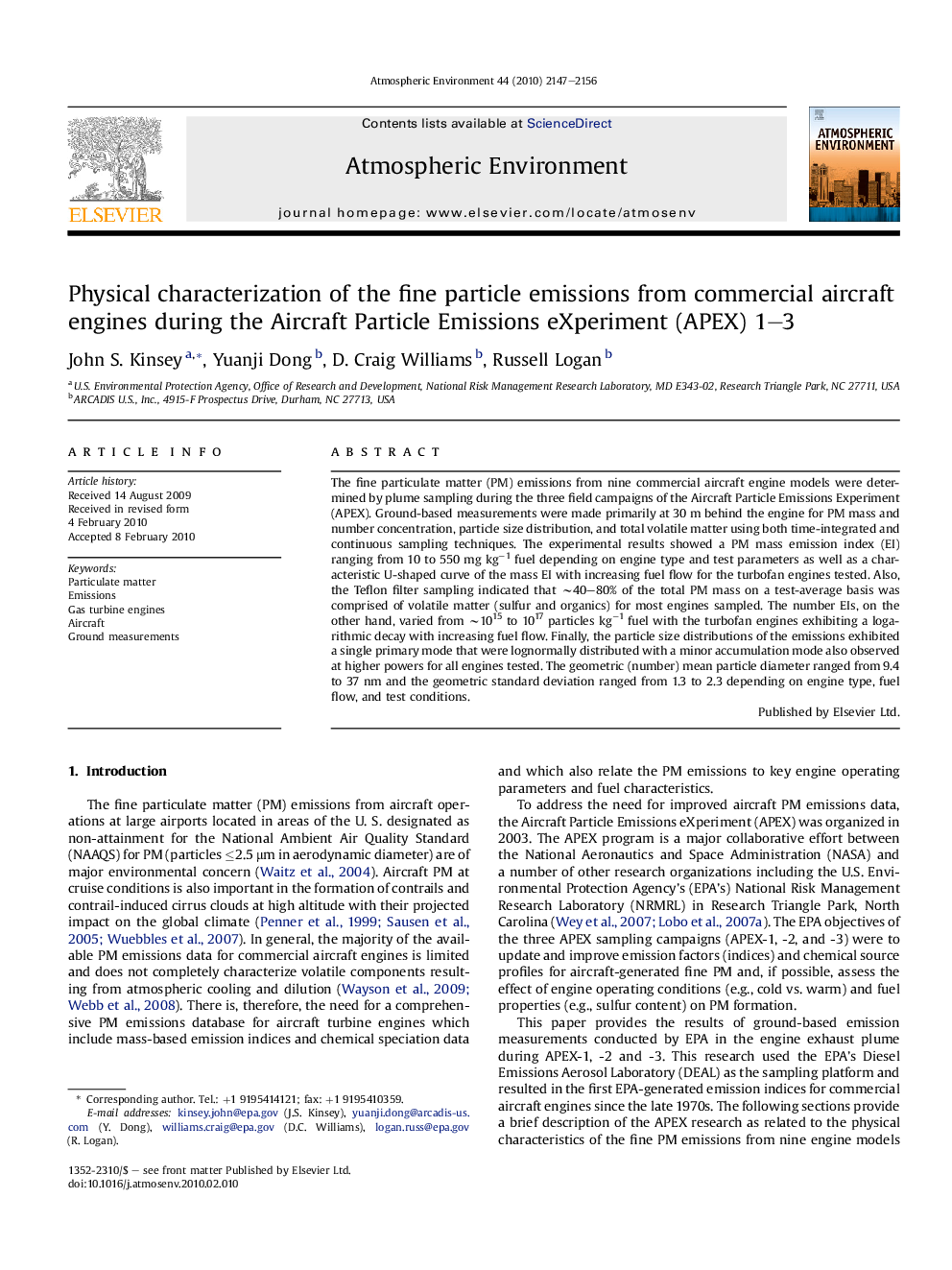| Article ID | Journal | Published Year | Pages | File Type |
|---|---|---|---|---|
| 4441024 | Atmospheric Environment | 2010 | 10 Pages |
The fine particulate matter (PM) emissions from nine commercial aircraft engine models were determined by plume sampling during the three field campaigns of the Aircraft Particle Emissions Experiment (APEX). Ground-based measurements were made primarily at 30 m behind the engine for PM mass and number concentration, particle size distribution, and total volatile matter using both time-integrated and continuous sampling techniques. The experimental results showed a PM mass emission index (EI) ranging from 10 to 550 mg kg−1 fuel depending on engine type and test parameters as well as a characteristic U-shaped curve of the mass EI with increasing fuel flow for the turbofan engines tested. Also, the Teflon filter sampling indicated that ∼40–80% of the total PM mass on a test-average basis was comprised of volatile matter (sulfur and organics) for most engines sampled. The number EIs, on the other hand, varied from ∼1015 to 1017 particles kg−1 fuel with the turbofan engines exhibiting a logarithmic decay with increasing fuel flow. Finally, the particle size distributions of the emissions exhibited a single primary mode that were lognormally distributed with a minor accumulation mode also observed at higher powers for all engines tested. The geometric (number) mean particle diameter ranged from 9.4 to 37 nm and the geometric standard deviation ranged from 1.3 to 2.3 depending on engine type, fuel flow, and test conditions.
